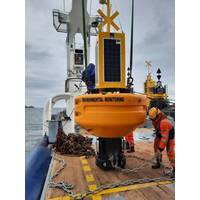
OSIL Buoy for Dublin City University Project
A multidisciplinary data buoy platform manufactured by Ocean Scientific International Ltd (OSIL) has been installed in Dublin Bay as part of the PREDICT multidisciplinary project. This project will provide a coordinated program of coastal ocean observations that will be used to validate, calibrate and extract as much information as possible from satellite earth observation data as an experimental proof of concept with the aim of generating AI models that can be used to predict environmental change in a range of environments.The 1.9m OSIL Fulmar buoy is recording and transmitting a variety of
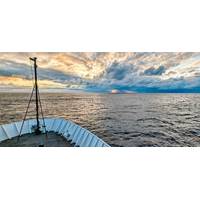
18 Ocean Experts Named to Federal Panel
Science, University of MiamiPurnima Ratilal-Makris, Northeastern UniversityEdward Saade, Circum-Pacific Council; EJS SolutionsAna Spalding, Smithsonian Tropical Research Institute; Oregon State UniversityAmy Trice, Northeast Regional Ocean CouncilMaria Tzortziou, The City College of New York, of the City University of New YorkViolet Sage Walker, Northern Chumash Tribal CouncilKawika Winter, Hawaiʻi Institute of Marine Biology, University of Hawai'iThe ORAP’s responsibilities include advising the OPC on:policies and procedures to implement the National Oceanographic Partnership Program;matters
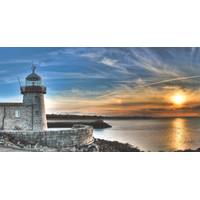
All Eyes on Ireland
in these areas in the context of ‘Sea Change: A Marine Knowledge, Research and Innovation Strategy for Ireland 2007-2013’. One of the priority areas was marine sensors and communications systems for the marine environment: the National Centre for Sensor Research (NCSR) at Dublin City University (DCU) was awarded €2.4 million as part of the Beaufort Marine Research Awards and the DCU consortium developed national capacity in areas such as biosensors, analytical science, remote sensing, high-speed separations, optical sensors, biochip platforms, video imaging, image processing and
'Singing' Propellers Phenomenon Controlled
A joint research project carried out by Wärtsilä and City University London has succeeded in identifying the specific design parameters that create the risk of 'singing' propellers. Though rare, 'singing' is nevertheless an annoying problem that occurs as a strong tonal noise originating from the propeller, thus causing a negative effect to onboard comfort levels. The research programme reached its conclusions in December 2015. The problem has long been recognised in the marine industry. While the general perception has been that the frequency of the propeller blades' vibration mode
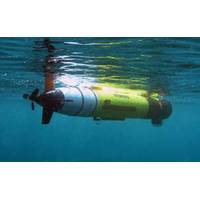
Five Minutes with Hydroid President Duane Fotheringham
is in engineering, graduating with a degree from Washington State University in electrical engineering. After graduation, I went in to the Navy as a submarine warfare officer and I spent about nine years in the Navy driving submarines. When I left the Navy, I went back for my MBA (to the City University of Seattle), and after that I started with Kongsberg as a project manager. That was about 16 years ago. (Note: Hydroid is a Kongsberg company). In early 2008 when Kongsberg was looking to combine with Hydroid, I was somewhat involved in that process and was given the opportunity to come
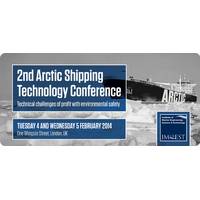
Polar Code Focus at Arctic Conference
of the vessel, the safe operating conditions and the procedures to be followed should the vessel either stray outside or be in danger of straying outside those limitations.” More about the conference Chaired by Professor John Carlton FREng, FIMarEST, Professor of Marine Engineering, City University London, a Past President of IMarEST and bringing together speakers from Finland, France, Germany, Norway, Russia and the UK, the conference also sees a keynote address ‘Strategic drivers’ delivered by Christian Le Mière, Senior Fellow for Naval Forces and Maritime Security
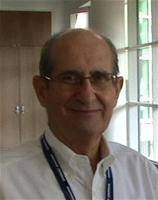
Jose Femenia Named Consultant at UtiliVisor
Engineer; Third Assistant Engineer, steam and motor, USCG (U.S. Coast Guard), retired; and Chief Engineer, NIULPE (National Institute for the Uniform Licensing of Professional Engineers) retired, Mr. Femenia received a master of science degree in mechanical engineering from City College, City University of New York and a bachelor of marine engineering from the State University of New York Maritime College. Founded in 1978, utiliVisor offers comprehensive energy monitoring and advisory services for the marine industry, providing accurate, reliable solutions to boost the fuel efficiency of
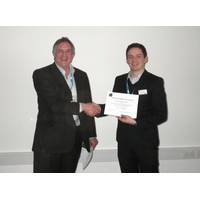
Dean James Wins Best Poster Prize at Ocean Business
this fascinated one-day workshop which focused on developments in microfluidics and microsensor technology for oceanographic and environmental science applications. The event hosted talks by international experts in the field of microsensor development such as Dermot Diamond (Dublin City University), Veronique Garcon (LEGOS, Toulouse), Agathe Laes-Huon (Ifremer, Brest) and Paul Maguire (University of Ulster). It provided an opportunity for academic researchers and representatives from industry to network and discuss the latest emerging technologies for environmental monitoring
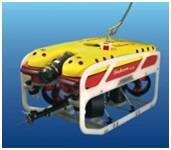
President Obama and Falcon Help to Light up the Brain
gives impetus to the quest for understanding the human mind. Alzheimer’s and other diseases of the mind, along with cancer, could benefit from tracing otherwise invisible nerve damage. Searching for the right bioluminescent organisms in the sea are Professor David Gruberat, City University of New York’s Baruch College, and Vincent Pieribone, The John B. Pierce Laboratory of Yale University. They plan to send a Saab Seaeye Falcon ROV into the coral ecosystems deep in the mesophotic zones - first off the Florida coast, then in the Solomon Islands and the Red sea. They

 February 2025
February 2025





